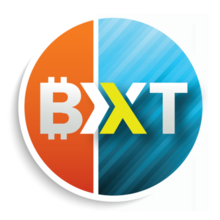Bitcoin (₿) is a cryptocurrency invented in 2008 by an unknown person or group of people using the name Satoshi Nakamoto and started in 2009 when its source code was released as open-source software.
Litecoin is a peer-to-peer cryptocurrency and open-source software project released under the MIT/X11 license. Creation and transfer of coins is based on an open source cryptographic protocol and is not managed by any central authority. Litecoin was an early bitcoin spinoff or altcoin, starting in October 2011. In technical details, litecoin is nearly identical to Bitcoin.

Gavin Andresen is a software developer best known for his involvement with bitcoin. He is based in Amherst, Massachusetts.

Bitcoin is a cryptocurrency, a digital asset designed to work as a medium of exchange that uses cryptography to control its creation and management, rather than relying on central authorities. The presumed pseudonymous Satoshi Nakamoto integrated many existing ideas from the cypherpunk community when creating bitcoin. Over the course of bitcoin's history, it has undergone rapid growth to become a significant currency both on and offline – from the mid 2010s, some businesses began accepting bitcoin in addition to traditional currencies.
Proof of stake (PoS) is a type of consensus algorithm by which a cryptocurrency blockchain network aims to achieve distributed consensus. In PoS-based cryptocurrencies the creator of the next block is chosen via various combinations of random selection and wealth or age. In contrast, the algorithm of proof-of-work-based cryptocurrencies such as bitcoin uses mining; that is, the solving of computationally intensive puzzles to validate transactions and create new blocks.

Ethereum is the second largest cryptocurrency platform by market capitalization, behind Bitcoin. It is a decentralized open source blockchain featuring smart contract functionality. Ether is the cryptocurrency generated by Ethereum miners as a reward for computations performed to secure the blockchain. Ethereum serves as the platform for over 260,000 different cryptocurrencies, including 47 of the top 100 cryptocurrencies by market capitalization.

Bitcoin Core is free and open-source software that serves as a bitcoin node and provides a bitcoin wallet which fully verifies payments. It is considered to be bitcoin's reference implementation. Initially, the software was published by Satoshi Nakamoto under the name "Bitcoin", and later renamed to "Bitcoin Core" to distinguish it from the network. It is also known as the Satoshi client.

Shadowsocks is a free and open-source encryption protocol project, widely used in mainland China to circumvent Internet censorship. It was created in 2012 by a Chinese programmer named "clowwindy", and multiple implementations of the protocol have been made available since. Shadowsocks is not a proxy on its own, but typically, the client software will connect to a third party socks5 proxy, speaking the shadowsocks language on the machine it is running on, which internet traffic can then be directed towards, similarly to an SSH tunnel. Unlike an SSH tunnel, shadowsocks can also proxy UDP traffic.

Ethereum Classic is an open source, blockchain-based distributed computing platform featuring smart contract (scripting) functionality. It supports a modified version of Nakamoto consensus via transaction-based state transitions executed on a public Ethereum Virtual Machine (EVM).
A Bitcoin Improvement Proposal (BIP) is a design document, typically describing a new feature for Bitcoin with a concise technical specification of the feature and the rationale for it. This is broadly similar to the way in which Internet "Request for Comments" (RFCs) and the Python computer language's "Python Enhancement Proposals" (PEPs) are used.
Bitcoin Unlimited (BU) is a full node implementation for the bitcoin and Bitcoin Cash networks. Compared to the Bitcoin Core client hard-coding the block size limit to one megabyte, from which it is forked, Bitcoin Unlimited allows users to signal which block size limit they prefer, find the limit having a majority consensus and automatically track the largest proof-of-work, regardless of block size. However, if a block greater than one megabyte in size is accepted by Bitcoin Unlimited and rejected by nodes with a block size limit, a fork of the network will occur, resulting in two separate blockchains with Bitcoin Unlimited nodes following the chain with the largest proof-of-work.

The Lightning Network is a "layer 2" payment protocol that operates on top of a blockchain-based cryptocurrency. It is supposed to enable fast transactions among participating nodes and has been proposed as a solution to the bitcoin scalability problem. It features a peer-to-peer system for making micropayments of cryptocurrency through a network of bidirectional payment channels without delegating custody of funds. Lightning Network implementation also simplifies atomic swaps.

The bitcoin scalability problem is the limited rate at which the bitcoin network can process transactions. It is related to the fact that records in the bitcoin blockchain are limited in size and frequency.
Ethash is the proof-of-work function in Ethereum-based blockchain currencies. It is a hash function belonging to the Keccak family, the same family which the SHA-3 hash functions belong to. However, Ethash is not a SHA-3 function, and should not be confused with them. Since version 1.0, Ethash has been designed to be ASIC-resistant via memory-hardness and easily verifiable. It also uses a slightly modified version of earlier Dagger and Hashimoto hashes to remove computational overhead. Previously referred to as Dagger-Hashimoto, the Ethash function has evolved over time. Ethash uses an initial 1 GB dataset known as the Ethash DAG and a 16 MB cache for light clients to hold. These are regenerated every 30,000 blocks, known as an epoch. Miners grab slices of the DAG to generate mix-hashes using transaction and receipt data, along with a cryptographic nonce to generate a hash below a dynamic target difficulty.

Bitcoin Cash is a cryptocurrency that is a fork of Bitcoin. Bitcoin Cash is a spin-off or altcoin that was created in 2017. In 2018 Bitcoin Cash subsequently split into two cryptocurrencies: Bitcoin Cash, and Bitcoin SV. Bitcoin Cash is sometimes also referred to as Bcash.
Segregated Witness, or SegWit, is the name used for an implemented soft fork change in the transaction format of Bitcoin.
EOS.IO is a blockchain protocol powered by the native cryptocurrency EOS. The smart contract platform claims to eliminate transaction fees and also conduct millions of transactions per second.

Mullvad is an open-source commercial virtual private network (VPN) service based in Sweden. Launched in March 2009, Mullvad operates using the WireGuard and OpenVPN protocols. Mullvad accepts Bitcoin and Bitcoin Cash for subscriptions in addition to conventional payment methods.








